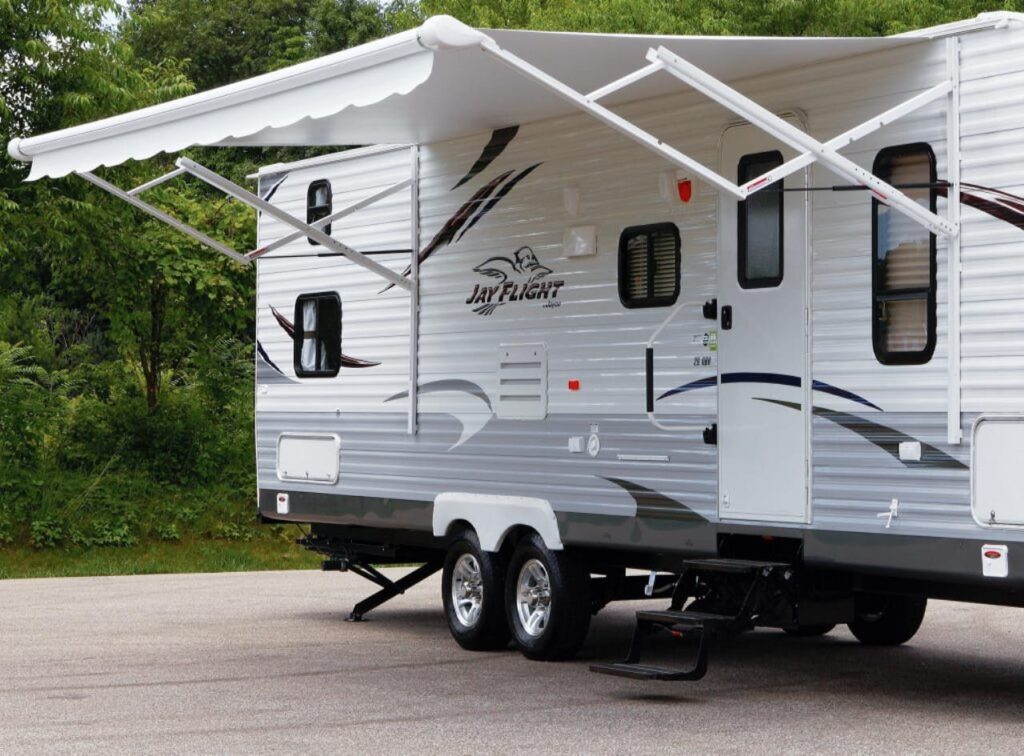To keep your dome in top shape at all times, get in the habit of cleaning it regularly. Cleaning can be a simple task if you know the basic steps of the process.
Basic tips for cleaning a camper awning
As with most camping items, a camping camper awning needs to be cleaned regularly in order for it to last as long as you have a camper. Many people choose to clean the camper awning at the end of the season, while others do it more regularly. Depending on the weather conditions and where the camper is parked, cleaning will depend on various factors. If you only use the camper awning a few times a year, cleaning at the end of the season may be enough. For those who use it every weekend, regular cleaning should continue.
A basic cleaning consists of the following:
- Choose a shaded area that is free of debris and accessible to the water supply.
- Begin cleaning by rinsing the hood with water to remove all dirt and leaves.
- Fill a bucket with water and a small amount of dishwashing detergent. Two tablespoons of soap is usually enough to clean the camper awning.
- Using a soft brush, start rubbing the camper awning with soapy water until the entire surface is covered in soap.
- Rinse the camper awning with the hose until no visible foam remains.
- Allow to air dry.

Removing tough stains and debris
Often a simple cleaning with soap and water is not enough to clean the hood. In this case, you can try a few things to make your dome look like new. The only thing that can be difficult to clean from a camper awning is tree sap. If you park your camper under the trees, that will probably be the result. Tree sap can be cleaned from the camper using the ice cube method. Place the ice cubes on the spot where the tree sap is present, and then when they stick to the spot, gently start chipping them away. Be careful not to ruin the finish of the camper awning.
To remove stubborn stains, such as grease, try a cleaner suitable for your type of camper awning. Canopies come in a variety of materials, such as acrylic or canvas, and many of them have fabric protection. Never use harsh chemicals or bleaches to clean your camper camper awning, as they can affect the longevity of the fabric and cause damage. It is important to know what kind of camper awning you have and always follow the manufacturer’s instructions.
Keeping your camper camper awning clean
Keeping your camper camper awning clean throughout the season is the way to keep it in great condition. If you clean it before storing it and make sure it’s completely dry, the chances of mold and mildew growth will decrease.
Try to inspect the dome after each use to know if there are any stains or dirt on it. If you notice severe stains, treat them immediately. The longer they go in the fabric, the harder it is to clean.
By taking care of your camper awning and keeping it clean, you can enjoy years of use. Canopies can last as long as your camper if you take care of them properly and clean them of accumulated dirt and debris.
To avoid possible problems, you need to remember a few simple rules of cleaning. Awning is synthetic and you should avoid chemicals based on chlorine and various solvents when cleaning it. Such substances quickly destroy the structure of the fabric and make it unusable. To clean your awning it is enough to use warm water with soap or shampoo. The surface is treated with a soap solution, which should be given time to absorb, rubbed with a brush, rag or sponge and then washed away with water.
For heavy soiling, if the ordinary soap and shampoo can not cope, you can use a standard cleanser that is used at car washes. Let it soak and then rinse with water, scrubbing with brush, sponge or rag if needed. Or order the cleaning of the tent at the car wash. But it is better to wash your awning regularly with a soapy solution. This will extend its life and save money on car washes or special detergents.
If you miss the moment and your tent is torn, it is better not to try to repair the tent on your own, but contact the company making the tent. This repair will not cost much, but will save time and last longer.



